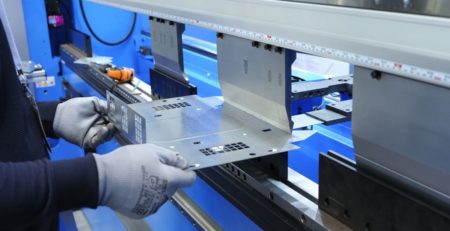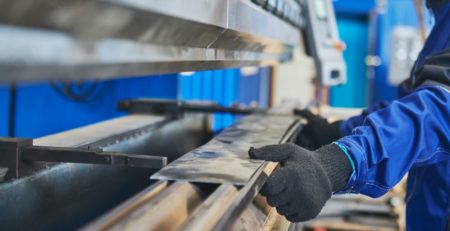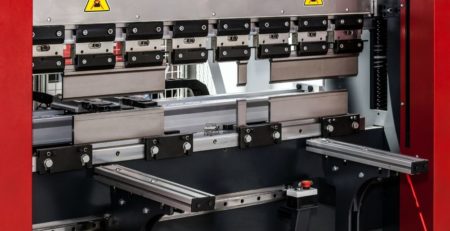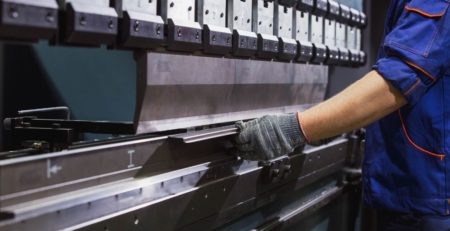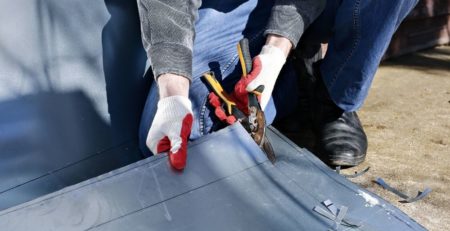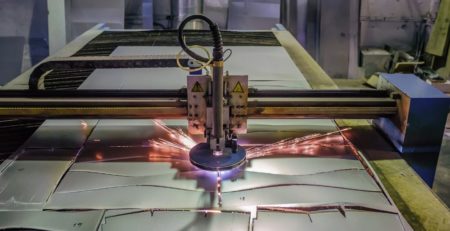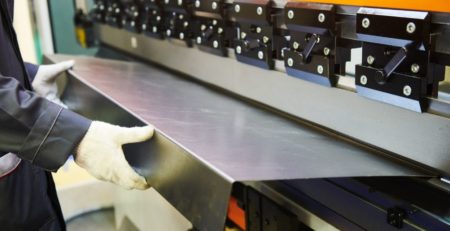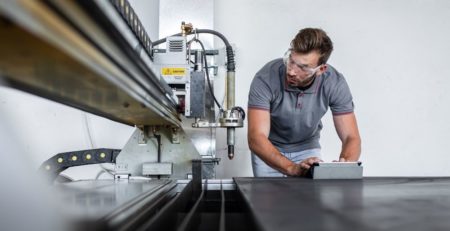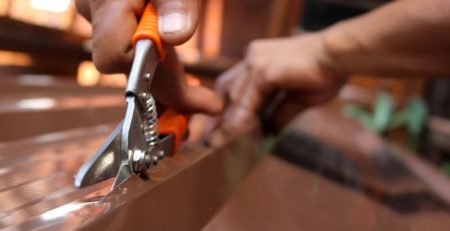Press Brake Safeguarding: What You Need To Know
Press brakes are one of the most common machines in metal fabrication shops, but they can also be one of the most dangerous ones. Press brakes are the backbone to all your sheet metal and plate forming processes, but they are also a frequent cause of crushing and amputation injuries. Here’s what you need to know about press brake safeguarding, ensuring that everyone in your shop stays safe.
Press Brakes Are Dangerous
Press brakes are one of the biggest machines in any metal fabrication shop, and they need to be in order to bend and shape various types, gauges, and lengths of materials. Because of this, press brakes apply a ton of force in order to bend metal and can be dangerous if anything other than metal enters into the mix. Even when everything is going as planned, you can still have sparks, flying chips, nip points, and rotating parts putting operators and other employees at risk. Unfortunately, while these hazards are well known, there are no regulations in place on how to safeguard against accidents.
Basic Safeguarding
Because there are not many regulations around safety equipment in press brakes, there are some optional safety technologies that are available that will help keep operators safe. One of the most basic safeguards is a fixed and interlocked barrier guard. This guard comes with hand controls, but they are not entirely useful because an operator will need to hold their hands close to the point of operation, which opens them up to potential risks. Others have instituted pullbacks and restraints, but they are incredibly restrictive, and operators can feel like they don’t have control over what they’re doing. There is also a two-hand down/foot-through device that some have been using, but this process is slow and has ergonomic issues.
Advanced Safeguarding
Traditional safeguarding methods have some controversy and critics, but there are more advanced safeguards that can be implemented that offer more freedom of movement. One option is an electrosensitive light curtain. These curtains use lamps and light detectors to stop the machine when the operator reaches into a protected area. Not only is the operator protected, but light curtains can also create an area around the point of operation that, when interrupted, can cause the machine to stop. This way, anyone in the vicinity cannot interrupt operations or get hurt by the machine. While this safety option provides some peace of mind for the shop owner, operators don’t tend to embrace this technology. Since light curtains create a perimeter around the machine, in the cases where the bend point or nip point is only a few inches or less, the operators need to be closer to the brake. To bypass this challenge, operators will need to mute the lasers or not complete the job. Most fabrication shops often choose to blank/mute this safety measure instead of taking the chance of losing revenue.
Another option is Laser AOPD, which allows operators even closer access to the point of operation and utilizes a foot pedal for safe operation. This safety option is perfect for flanges, small pinch bends, and large parts that require long side bending since it allows the operator to hold parts close to the die, which is otherwise impossible with light curtains.
Regardless of what safety devices you choose, always remember to keep your work area clean, always wear PPE (e.g., gloves and goggles), never leave the machine running unattended, and use slip floor protection to keep your operators safe.
What you need to know about press brake safeguarding will keep your employees safe; no matter how well maintained these machines are and how careful operators are, there is always a risk. An operator can be as safe as possible with the best machine, but one slip-up can spell trouble. For a tandem press brake with proper safeguarding, look no further than Mac-Tech, as we have an entire product offering that can be equipped with the latest safety devices.



